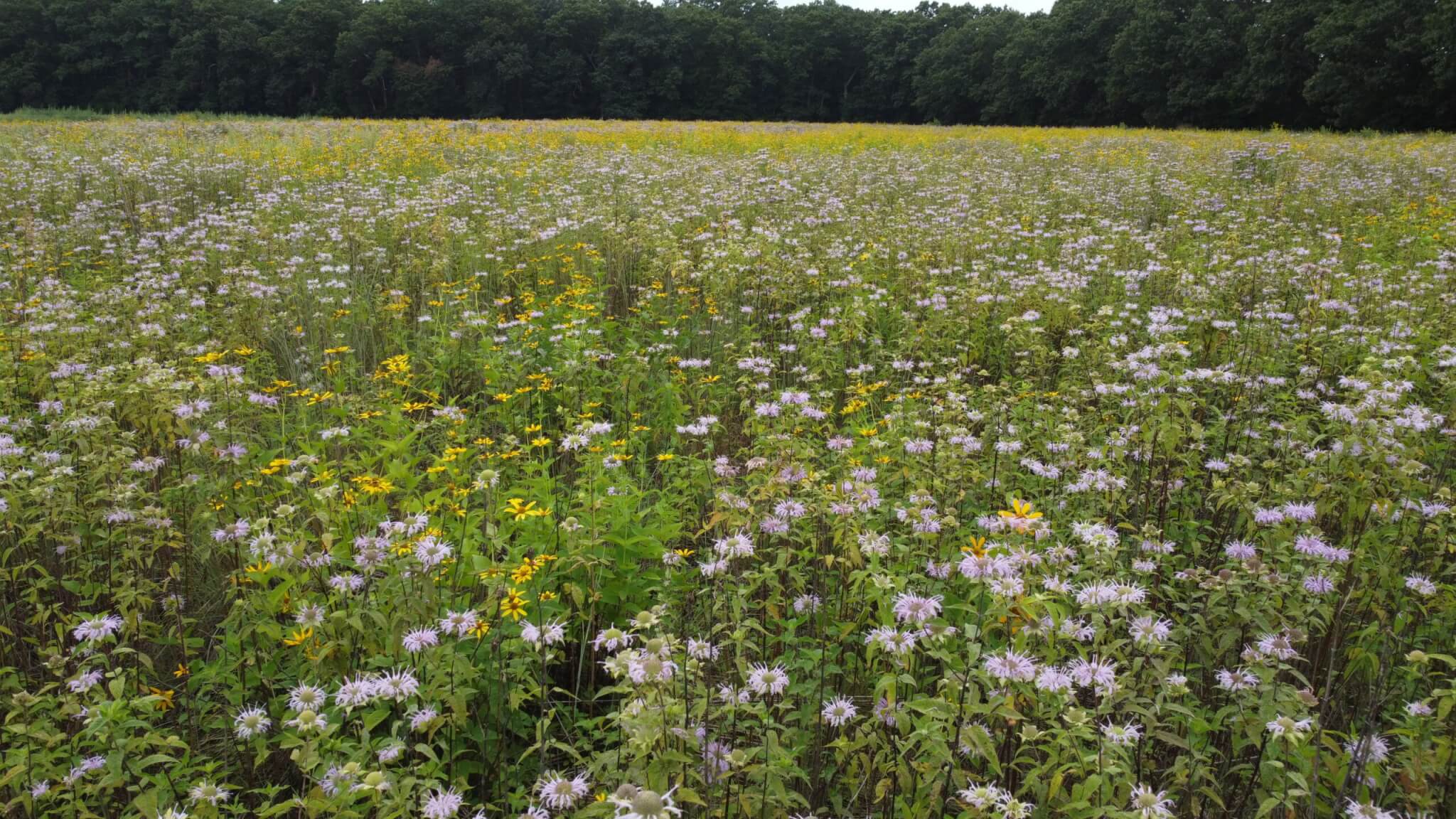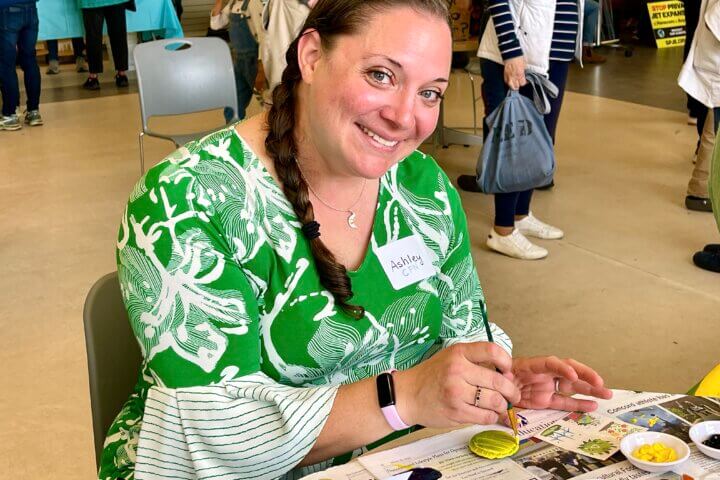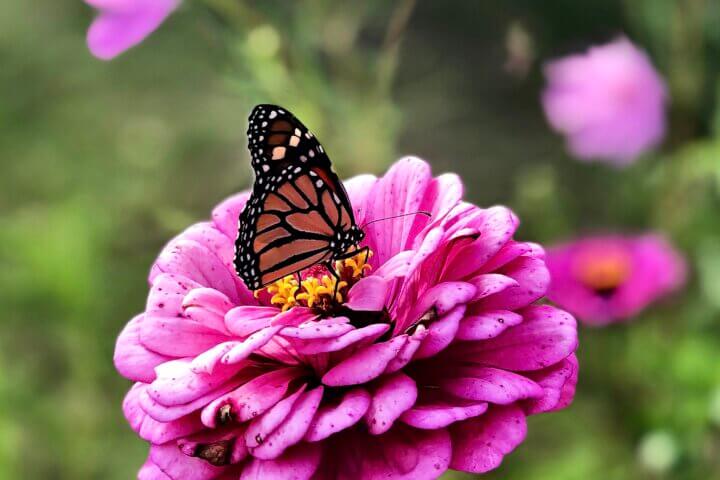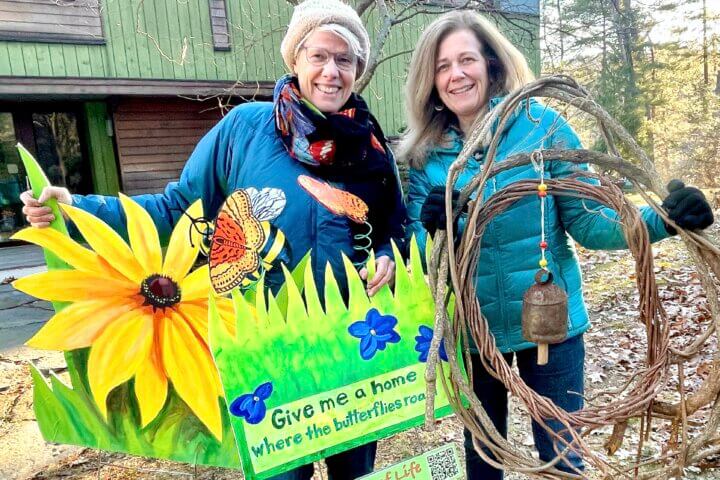As native plants started to flourish in a five-acre field, amazing things happened.
Where 50 Blanding’s turtles, an endangered species, once lived, 300 now nest happily in and around their native habitat, which was recreated by the hard work of conservationists.
Other surprises were in store at Peter Spring Field, designated by Concord as a turtle nesting habitat, said Emilie Wilder, associate director of conservation engagement for Zoo New England.
Native flora, not part of the original planting, began to appear.
Rattlebox, a fairly rare plant, showed up. The legume attracted the ornate bella moth, which scientists thought no longer lived in Massachusetts, Wilder said.
“It’s a whole cascading effect,” she said. Bees, birds and a variety of other insects, including Monarch butterflies, flit around the field.
It took a few years for the field to get established.
Bryan Windmiller, founder of Grassroots Wildlife Conservation and now associate director for field conservation at Zoo New England, thought more could be done to help the turtles, she said.
For 31 years, he has lived next door to the land which is leased to farmers and watched the field. For a time, the Palumbo brothers grew corn and asparagus, Windmiller said.
In the mid 1990s, when Windmiller was on the town’s Natural Resources Commission, the Bemis family leased the field for Hutchins Farm. As part of the deal inked with Windmiller’s input, they agreed to plow the northern five acres twice a year and seed with cover crops.
It was a lot of work and expense for Hutchins Farm and the effort wasn’t working out so well for the turtles either, Windmiller said. Despite the cover crops, the field was full of ragweed and the Blanding’s rarely nested there.
Zoo New England, which merged with Windmiller’s agency, with financial assistance from the Concord Garden Club, made the field more inviting for the turtles by nurturing native wildflowers.
Hutchins prepared the ground and assisted with seeding in 2016, much like they did twice yearly in the past. This time, they laid down a mix of perennial native plants.
Faced with drought conditions in 2017, not much happened in the field. Then, in 2018, the native plants took off, Windmiller said.
Since then, volunteers and staff have helped with keeping invasives out and uprooting saplings along the edges before they can overrun the open ground. He estimated maintenance time for the five acres last year was between 10 and 12 person-hours.
Hutchins no longer plows and seeds the acreage. The field, with peak bloom between June into September, is self-sustaining.
Around 2020, the farm assisted in creating four 35 by 70 foot plots where Zoo New England is attempting to grow different native plants, Windmiller said. Two plots are doing well; the others not so much.
The conservation effort brings joy to plants, animals and people.
Peter Spring Field is near the Concord River, Sleepy Hollow Cemetery Great Meadows National Wildlife and Concord’s wastewater treatment plant, easily visible, Wilder said. People see and enjoy it.
“We’ve heard lots of comments. They’re really impressed,” she said.
Grow your own (natives)
Everyone with a bit of land can support native flora and fauna. “There’s lots of ways. Winter is a really good time to start planning,” Wilder said.
The conservationist supplied reasons to plant at least some of the yard with native plants and a few places to look for ideas.
Monarch butterflies need milkweed to lay eggs and the nectar from aster and goldenrod to fuel their fall migration. They can go from house to house to find the right spot if the plants they need are present.
Going local can make gardening tasks more manageable. Native plants are already adapted to New England’s seasonal changes and need less maintenance.
Two websites provide a good place to start: www.grownativemass.org and www.nativeplanttrust.org.





